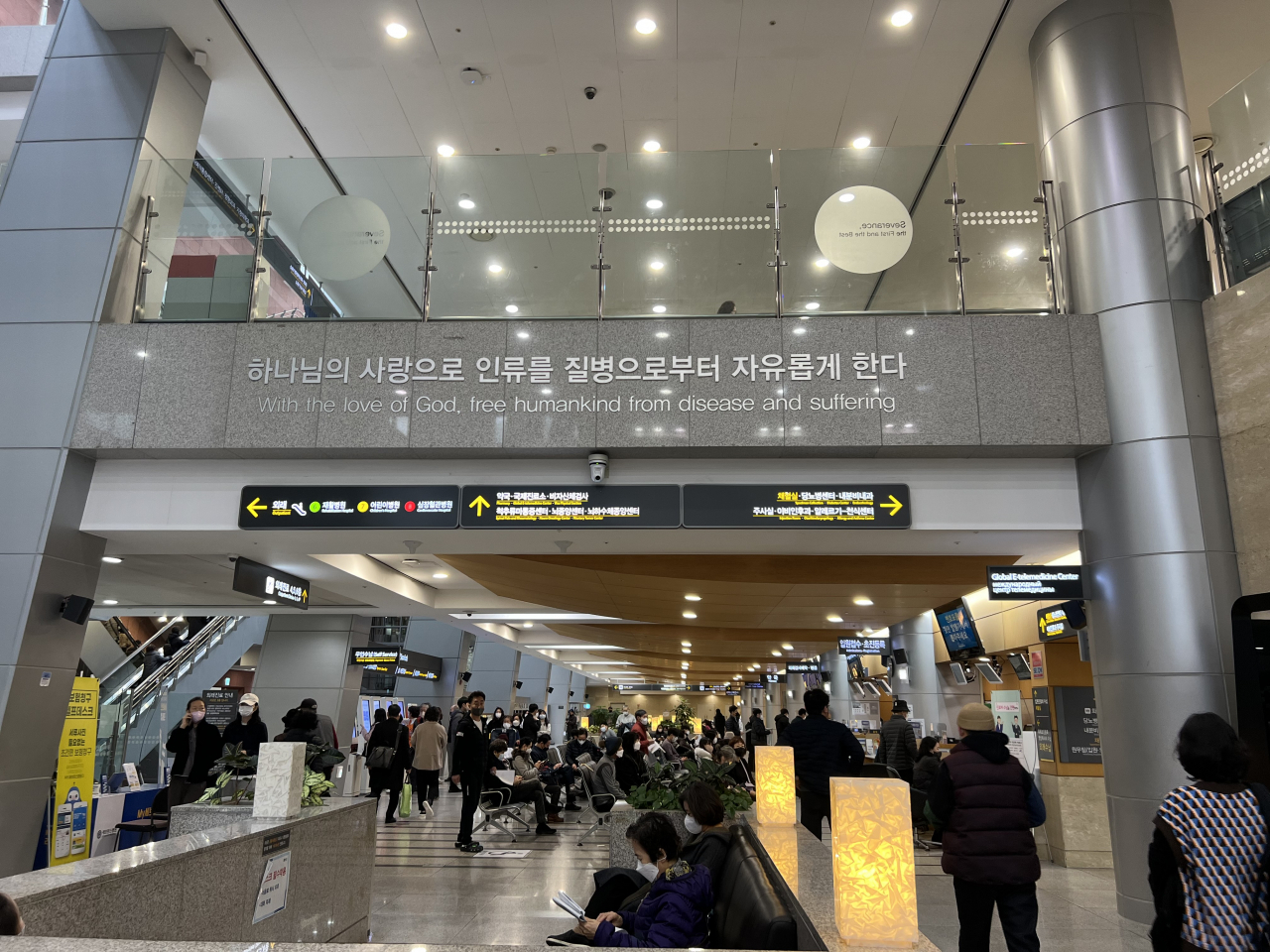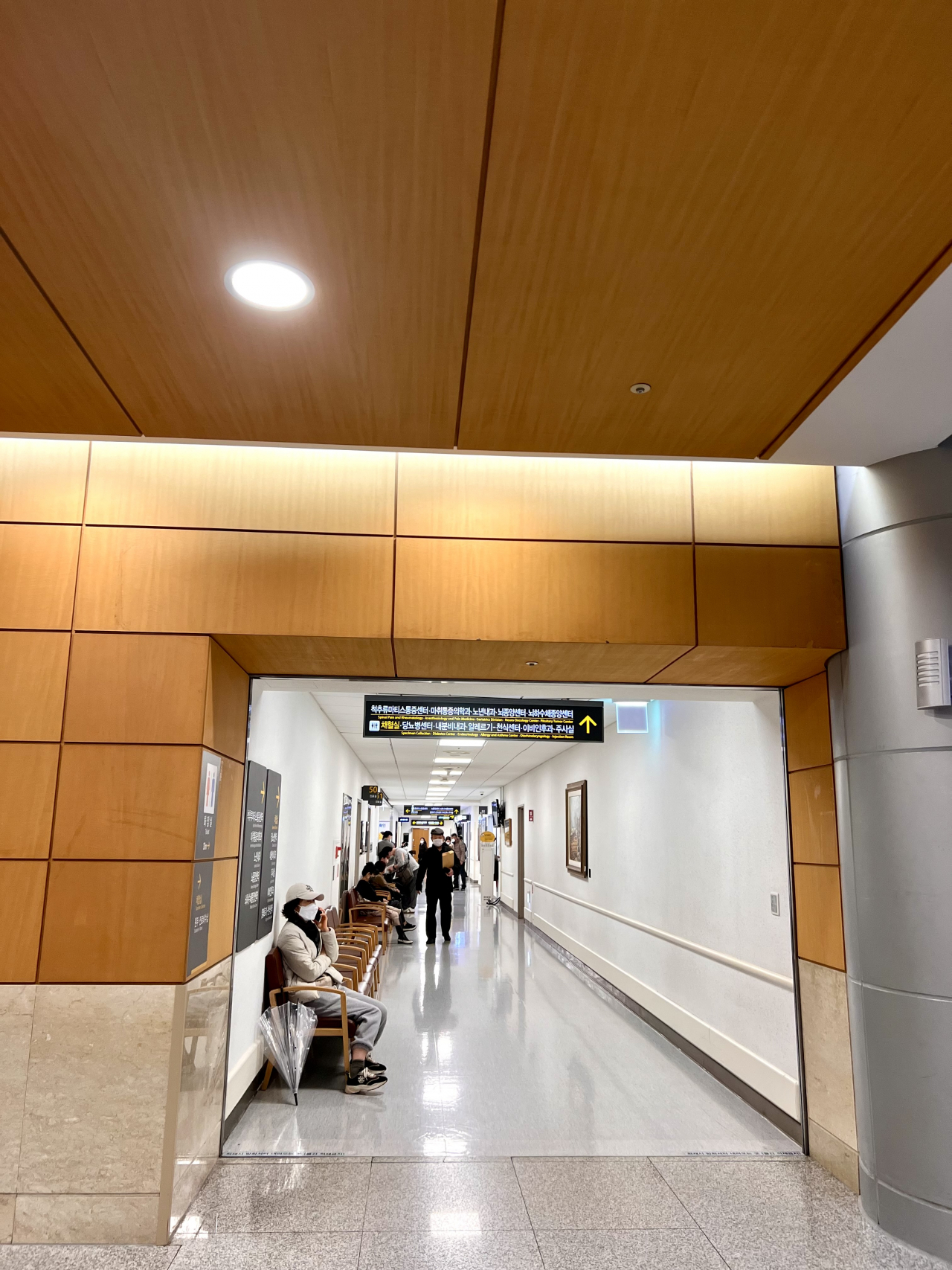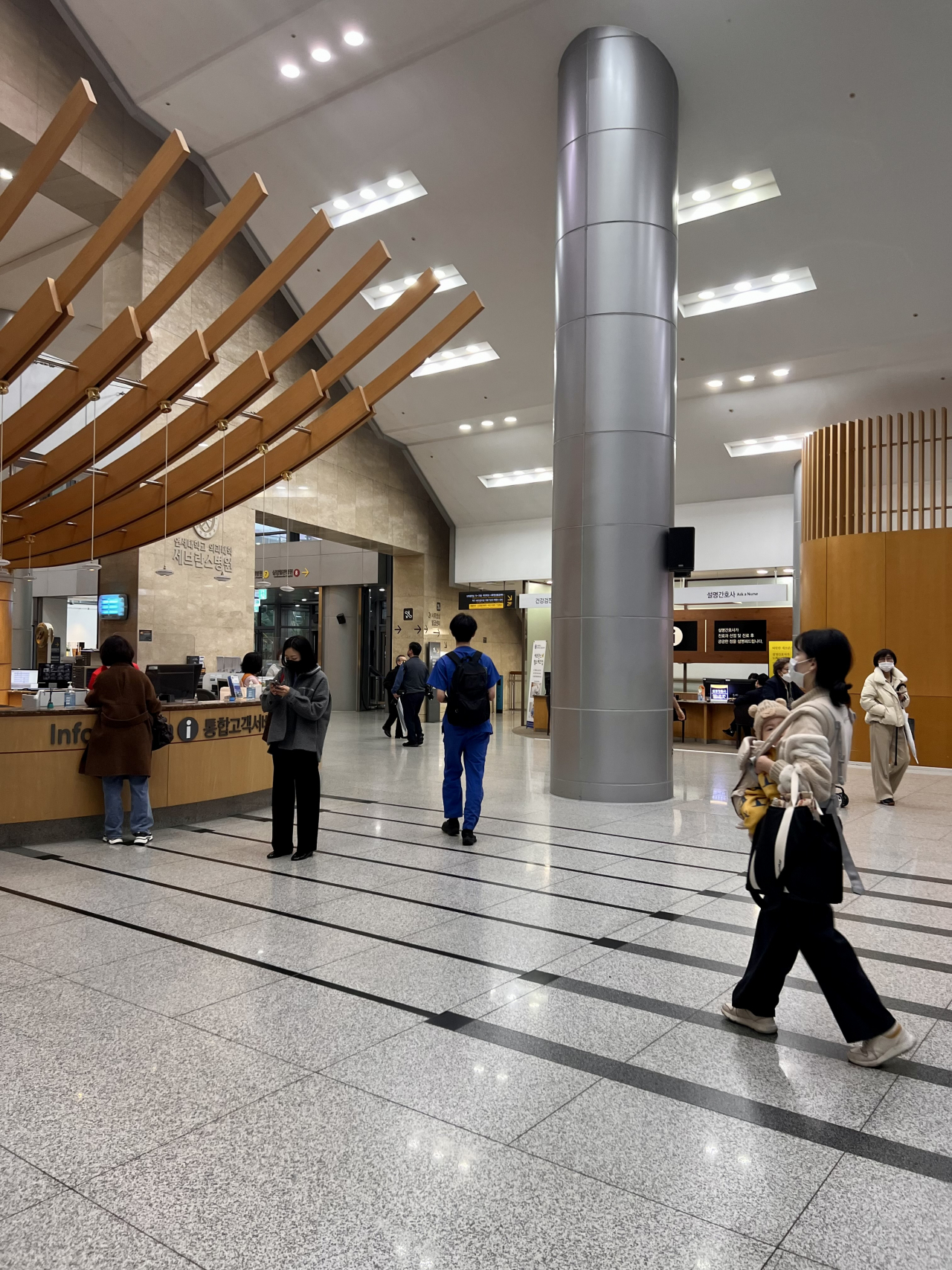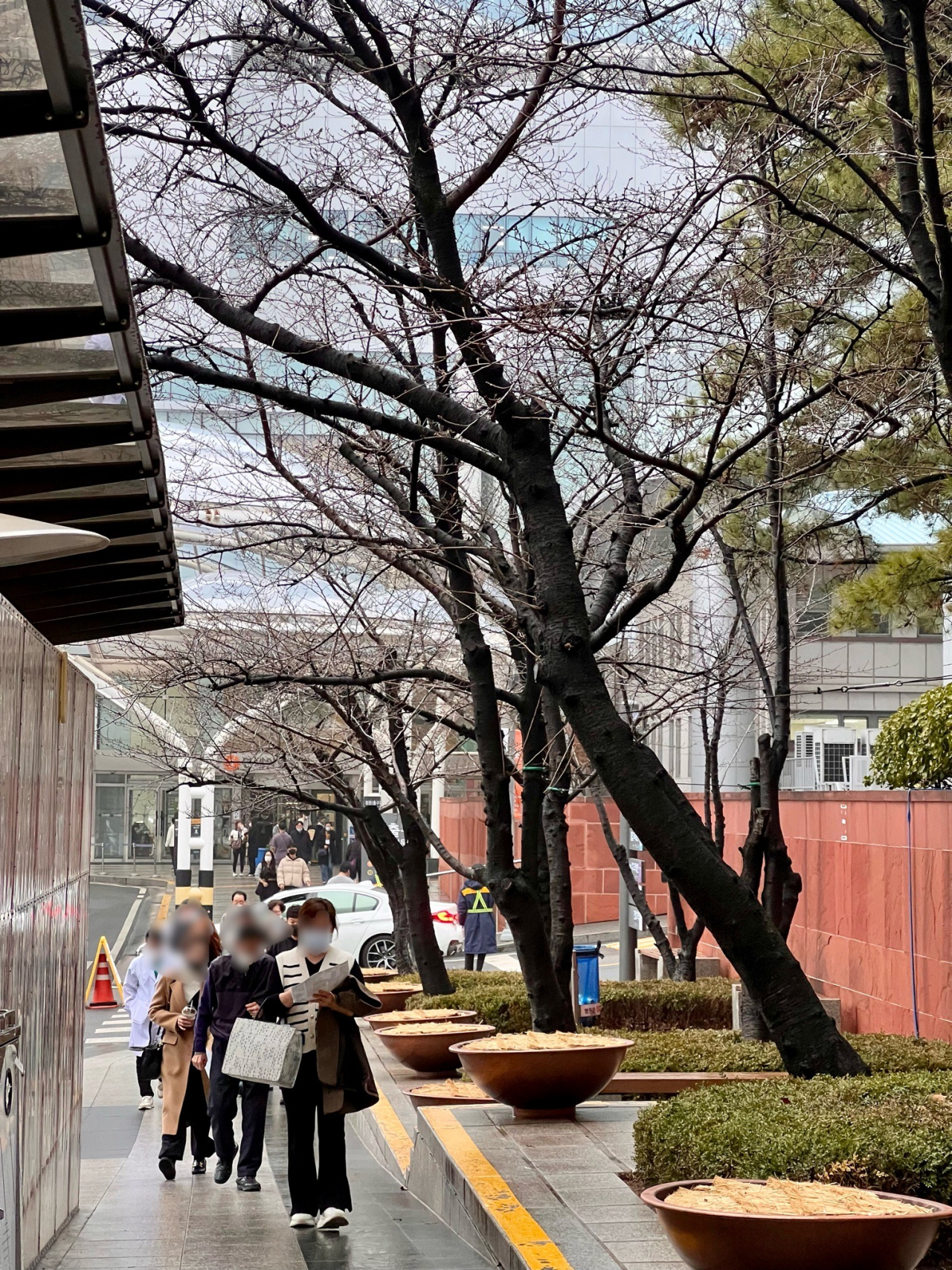Patients on edge as doctors prepare for hospital walkout
Health Ministry orders doctors to stay as residents, interns at ‘Big 5’ hospitals set to resign en messe Tuesday morning
By Park Jun-heePublished : Feb. 19, 2024 - 15:01

Medical institutions were in a frantic dash Monday morning as junior doctors at Seoul’s “Big Five” hospitals moved to tender their resignation letters en masse Monday and walk out of their jobs on Tuesday at 6 a.m. in protest against the government’s planned hike in medical school enrollment quota.
With a face full of worry, a woman in her 60s grabbed onto medical personnel at the main lobby of Severance Hospital in Seodaemun-gu, western Seoul, asking if she would be able to meet the physician on time as she accompanied her husband, a heart disease patient, in a wheelchair.
“I’m so scared,” she told The Korea Herald as her voice quivered. After regulating her breath, she asked who was responsible for the patients’ care and handling urgent or life-threatening situations while junior doctors were gone indefinitely.
Although her husband’s appointment wasn’t canceled, she was notified that the operation “could be delayed” depending on the situation.
“I don’t know if we’d be able to settle on a surgery schedule today. My husband’s health is (already) in critical condition at this point. ... What if his situation gets worse (while waiting)?” she said.
Severance Hospital made an internal announcement Friday, advising its staff members that it would reduce operating room capacity due to staff shortages. The announcement said the Department of Anesthesiology and Pain Medicine would be able to function with at most half the usual number of patients as junior doctors’ absence is expected.

Waiting in front of the CT scan zone, a man in his 50s told The Korea Herald that he was told at the last minute to take CT scans as the hospital was set to grapple with a staffing shortage starting this week.
“I’m here for a general checkup because there’s something wrong with my body. Imagine if I couldn’t make it today. I wouldn’t have known why I felt bad,” he said.
“But I’m worried after the checkup. What if it’s a serious illness, and I have to get surgery done or be hospitalized? It would take at least months to reserve an appointment,” he added.
Stern warning
Amid a looming healthcare crisis, the Health Ministry on Monday ordered all trainee doctors to “keep providing medical treatment.”
“From this point on, (the government) issues an order for the provision of medical treatment to be maintained by trainee doctors at all 221 training hospitals across the country and will swiftly conduct on-site inspections (to check whether they are on duty or not),” Second Vice Health Minister Park Min-soo said during a press briefing.
Park noted that the order comes in line with Article 59 of the Medical Service Act, which stipulates that the health minister or the relevant mayor or governor may order medical institutions or personnel to resume services if there is a “reasonable ground to believe that suspension of medical service without any justifiable ground is likely to cause great difficulties in providing medical treatment to patients.”
The ministry will also run a reporting and support center for patients who bear the brunt of doctors’ collective action so that the government can aid in the cases of damages, according to Park.
Park didn’t provide the specifics on how many junior doctors had tendered their resignation letters, explaining that the numbers would be gathered after officials conducted their inspections.

Dubbed the backbone of hospitals and clinical care, junior doctors account for nearly 30 to 40 percent of medical personnel in tertiary hospitals. They mainly assist doctors in surgeries and medical examinations as well as oversee patients as attending physicians.
Currently, there are around 13,000 junior doctors in South Korea, including 2,745 in the Big Five hospitals, according to the latest Health Ministry data. Seoul National University Hospital has 740 interns and residents -- the biggest number, 612 are at Severance Hospital, 525 at Samsung Medical Center, 578 at Asan Medical Center and 290 at the Catholic University of Korea Seoul St. Mary’s Hospital.
An official at Seoul St. Mary’s Hospital told The Korea Herald that the hospital is compiling the resignation letters, saying it would know the exact number later in the day.
Seoul National University Hospital said junior doctors there are holding talks on whether to submit the resignations, adding that it’s unable to provide further information
To prevent major disruptions, Prime Minister Han Duck-soo also said that the government would fully expand telemedicine services if junior doctors were to stop taking in patients.
“It’s most pivotal to minimize public inconvenience caused by medical gaps if the collective action materializes. In particular, it must never lead to a situation where seriously ill emergency patients are threatened,” Han said during Monday’s emergency meeting with relevant ministers.

Also, 409 emergency medical institutions nationwide will operate 24 hours so that medical care services can be immediately provided to patients, Han said. In addition, the government will prepare to deploy public health officials and military medical officials if the situation worsens.
Later in the day, Vice Defense Minister Kim Seon-ho visited the Armed Forces Capital Hospital to inspect the readiness of the emergency medical care system at military hospitals and see if it was capable of providing 24-hour services, according to the Defense Ministry.
Meanwhile, the Education Ministry held an emergency meeting with presidents from 40 Korean medical universities on Monday to urge the schools to thoroughly guide students and manage academic affairs by complying with relevant laws and regulations in response to the collective behavior of medical students.
“As this is a critical time for our students to commit to learning as pre-medical students, I urge the presidents in this room to administer academic affairs in accordance with law and principle, while actively communicating with students and professors,” said Education Minister Lee Ju-ho, emphasizing that no student nor the citizens should be harmed from any collective action.
Some 160 medical students from Wonkwang University in North Jeolla Province retracted the applications for collective leave of absence that they had submitted last week.



















![[Today’s K-pop] Treasure to publish magazine for debut anniversary](http://res.heraldm.com/phpwas/restmb_idxmake.php?idx=642&simg=/content/image/2024/07/26/20240726050551_0.jpg&u=)